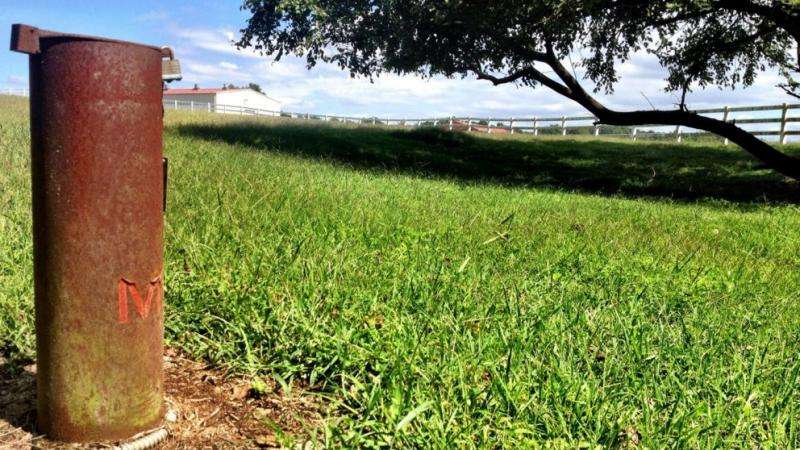NC State researchers examine troves of data to find out why more than 1 million southeastern Piedmont residents have high levels of manganese in their well water. Credit: North Carolina State University
Utilizing a wide range of analytic tools, researchers at North Carolina State University have figured out why pockets of the southeastern Piedmont region contain high concentrations of manganese in well water, particularly in more shallow wells. The findings highlight the importance of testing well water to ensure its safety.
More than 1 million southeastern Piedmont residents in four states – North and South Carolina, Virginia and Georgia – use well water that has manganese levels above recognized water-quality standards, according to the study; recent health studies show associations between high well-water manganese levels and heart defects, developmental defects and cancer. Manganese in water can also stain clothes and household appliances, like dishwashers.
"We wanted to characterize the distribution of this naturally occurring element in both solid and water materials in the southeastern Piedmont, and we wanted to measure these concentrations from the soil surface all the way to the bedrock," said Matt Polizzotto, associate professor of crop and soil sciences and corresponding author of a paper describing the work in Environmental Science & Technology.
"We found that more shallow wells were more likely to have high concentrations of manganese," Polizzotto added.
"The Piedmont's geology and hydrology play a huge role in how manganese spreads," said NC State Ph.D. student Elizabeth Gillispie, lead author of the paper. "When bedrock weathers, or breaks down to form soil, you get a buildup of manganese in the saprolite, the layer just below the soil surface and near the water table. That's why some of the shallow wells have higher concentrations of manganese."
Yet the porousness of the North Carolina saprolite, where a great deal of groundwater is stored, helps move manganese deeper into the bedrock.
"When the saprolite is exposed to water, manganese can be released into the water and migrate down to bedrock aquifers," Gillispie said. "The fractured nature of the bedrock makes it difficult to track where weathered materials end up, because these fractures can take these materials far away from their points of origin."
The researchers analyzed a wide range of samples and assembled troves of data – from groundwater monitoring stations across North Carolina that paint a picture of the state's hydrology to databases of manganese concentrations in wells across the Piedmont – to capture the movement of manganese in soil and water in the Piedmont.
"We ultimately attempted to create an integrated model to really understand what's happening in well water from the surface to the bedrock, which means including geologists and hydrologists, along with soil scientists, to expand our knowledge," Polizzotto said.
The researchers suggest getting well water tested – especially water coming from more shallow wells – and then suggest using filters to mitigate high levels of any metals, including manganese. They also suggest burying new wells deeper into the ground, although they realize that process can be more expensive than building shallow wells.
More information: Elizabeth C. Gillispie et al. Soil Weathering as an Engine for Manganese Contamination of Well Water, Environmental Science & Technology (2016). DOI: 10.1021/acs.est.6b01686
Journal information: Environmental Science & Technology
Provided by North Carolina State University























